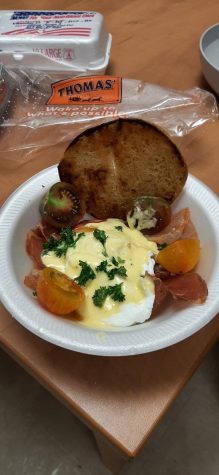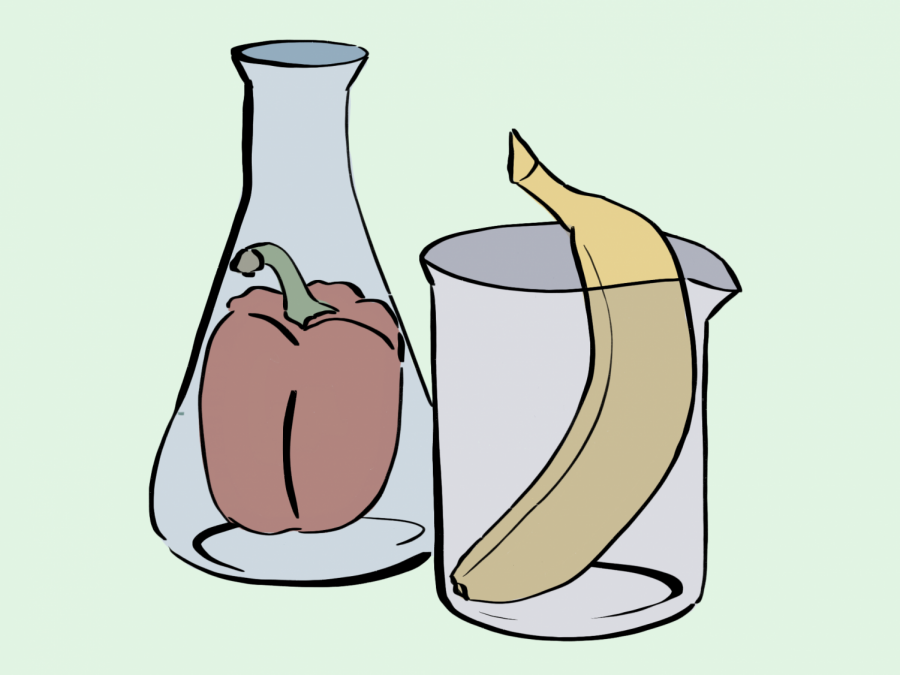The Science of Food ExCo
The Science of Food
Taught by College fourth-year Josh Holtzman and College third-year Golara Malaki.
How did you learn about the science of food?
Josh Holtzman: For me, it sort of began with the realization that I was a terrible cook. Even when I followed recipes, things still did not go well for me in the kitchen; however, I knew that I was decent at thinking scientifically and thought perhaps understanding the scientific function of various elements of food could help me improve my cooking. In the long term, that understanding has helped; however, it never replaced the skill required to cook, which usually comes only by practice and experience.
Once I began exploring the science in food, my eyes were opened to a vast applied science that was rarely mentioned as a field of its own. I tried my hand at molecular gastronomy — experimental modernist cuisine involving alteration of texture and taste through chemical additives to make foams, gels, and such. I eventually tested my ever-expanding understanding of food science by designing a high school food science curriculum as my senior capstone in high school. I hope to study food science as a graduate/post-graduate student, or something adjacent to topics in food science, like molecular biology.
What does a class look like? What are the weekly demonstrations you describe in the catalog?

JH: This week, I made eggs Benedict over Zoom in order to demonstrate protein-lipid interactions in making a smooth emulsion like hollandaise; and yes, some students got to taste them! Golara and I recognize that part of food science is experiencing the presence of science in food, so we devised this “distanced demonstration” model, where we safely make food over Zoom and put out samples of our results on our front porches for those who want to stop by after class; our plans for the demonstrations are also made available about a week before class for those who are not on campus and/or do not want to stop by so that these students can acquire the materials for the demonstration in advance and do what we are doing alongside us over Zoom.
Some of our future demos will include making foams and gels using molecular gastronomy, making bread, doing taste panels while taking the “miracle berry” (that alters our perceptions of sour things to make them taste sweet), extrapolating the key flavor molecules in browned meat, and more!
How have meetings gone so far, what have been your challenges and successes?
JH: The demos are strange, not only because I am a shaky cook and feel the eyes on me as I struggle to make food, but that it feels weird to be alone in the kitchen. The experience of food requires others; food is nothing without friends or others to marvel at the smells and the sights, tasting as we go, seeing in person how food works. I find myself forced to describe things I wouldn’t have to describe in person, especially if the camera is having trouble picking it up. Later in the course, we will explore the idea of a “smell camera,” and I certainly wish I had that for this course.
Teach us something!
JH: Knowledge of science is immensely important in the kitchen; however, the science of taste is super interesting and not super well-known.
Olfaction, or perception of odors, is a huge and very powerful part of taste, and it mainly happens on the back of your nose in a region of receptors called the olfactory epithelium. The layout of that patch of nerves gives two branches to olfaction: orthonasal and retronasal olfaction. Orthonasal olfaction primarily happens when you sniff, bringing odor molecules through the front of your nasal cavity to the front of the nerve patch, and retronasal olfaction occurs when you eat or drink, and the flavor molecules in your mouth are flung onto the back of the patch. However, there are different types of receptors in each region of the olfactory epithelium, meaning orthonasal and retronasal olfaction can bring in entirely different aroma profiles. This is why beer from a bottle can taste drastically different than beer from a wide-brimmed glass; each delivery method puts a spotlight on a different set of flavors! It’s also why some animals that have good senses of smell have long snouts (prioritizing orthonasal smell) and some that primarily taste their way around have short snouts (prioritizing retronasal smell).
Bonus fact: these “aroma compounds” that make up both olfaction and taste as a whole have different weights which affect where they land; this is why some spicy foods burn in the back of your throat/tongue and some tingle up in your nose!
